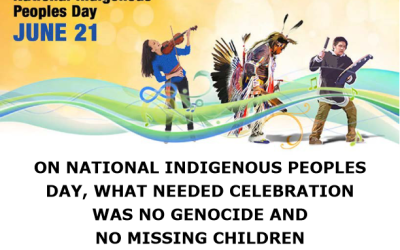Why do so many of our native youth flock to native gangs and crime in general?
What can we do to curb the tendencies of some who view the city as one big shopping centre where they can simply “help themselves” to whatever their hearts desire, with little retribution from the courts?
How do we deal with these thieves?
Harsh questions no doubt, even ones that some will label as racist except that I am aboriginal myself and I’m the one doing the asking.
The deafening silence coming from our aboriginal leaders on this issue is a disgrace.
They’ll be quick to point out, of course, that “Once these people leave the reserve they are no longer our responsibility.”
It’s true that many who have left the reserve (where there are few jobs and welfare days are frequently referred to as paydays) often find it hard to make ends meet, let alone make enough money to purchase most things the rest of us take for granted. Many of them suffer the ill effects of their parents’ alcohol abuse and are victims of Fetal Alcohol Syndrome (FAS). They have problems understanding right from wrong and feel little, or no, compassion for the victims of their violent assaults.
But let the Feds throw $50-million into solving the problem and then watch the aboriginal organizations tripping over one another to claim to represent these people.
The path is not easy even for those young people who have not been seduced by a life of crime and are willing to go the extra mile to improve their lives. Try to image being a young person living on a First Nation reserve, where 80 percent of the population is on welfare and your family is one of them.
Imagine you are a young man all of 15 years of age with a girlfriend you would like to treat to a night out. Unfortunately, because you live on a remote reserve, your father barely has enough money to cover the daily costs of living, much less give you an allowance. You try your best to get by with very little cash,
but it isn’t easy.
Now imagine that not only is money scarce, but your parents are on the wrong side of the political fence – that is, they don’t support the current chief and council. On some reserves, this can be a very bad thing.
You may want to further your education and attend university but because of your parents’ position you can’t get the funding you need from the council. This may sound implausible to those not familiar with reserve politics, but as one who has been there, seen that, it does happen.
It now becomes easier to understand the frustration and hopelessness that young native men and women feel: no jobs, little chance of an education unless the political winds change. You just want out.
What are the results of the current situation?
Take a look at the remote reserve of Shamattawa, in northern Manitoba. Young people are committing suicide at an alarming rate. Many who have survived such attempts say they saw it as the only way to escape their current situation.
Or take a look at St. Theresa Point, also in Manitoba, where locals say “The Red River Exhibition is starting soon so there will have to be another forest fire so we can be evacuated to Winnipeg.”
Or take the young man who smashed his hand with a rock so that he could be taken by ambulance to The Pas “to be with my friends.”
What is the answer? Many native people are calling for the closure of some remote reserves or their relocation to nearby urban communities, and their voices are growing in number. As one elder said recently, “We have maybe 20 people on the reserve who are managing the poverty and despair of 400 people.”
We have been brainwashed into believing that we belong in the bush, surrounded by swamp and with little ability of taking advantage of our resources. We have been brainwashed into believing that we can only survive on federal handouts.
For example, the latest reserve to be added in Manitoba was given $450-million to build a new reserve. The communities of Lynn Lake and Leaf Rapids – both suffering from mine closures and desperate to survive – invited the people of this reserve to take advantage of the entire infrastructure already in place in their communities. But no, we were brainwashed into believing our place is in the bush far from anybody else, so the new reserve selected land away from these communities, far back in the bush. Today there is little to show for the $450-million.
We must do more for our young people. The political divisions that separate lifelong friends and alienate brother and sister simply tear a reserve apart. Take a long look at Rolling River First Nation where former chief Morris Shannacappo, now Southern Grand Chief, worked hard to overcome these divisions. Today his community is a lot healthier because of his untiring commitment to his home community.
We must do more to end these political divisions on reserves that mess up so many lives. Our young people are worth it.

